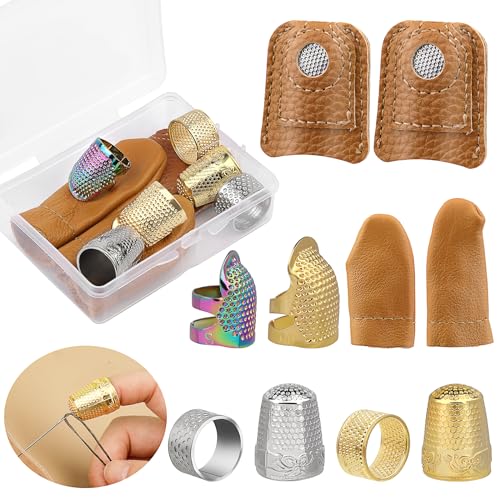Yes, thimbles can be used for beading
Beading can be a delicate and intricate craft that requires precision and care. One tool that can be helpful in the process is a thimble. While thimbles are typically associated with sewing and quilting, they can also be used for beading. In this article, we will explore how thimbles can be used in the beading process and the benefits they provide.
What is a thimble?
A thimble is a small, protective tool that is worn on the finger to shield it from the sharp end of a needle or other pointed objects. Traditional thimbles are made of metal, but today, they can also be found in plastic, rubber, and other materials. They are typically worn on the middle finger of the dominant hand.
How can thimbles be used for beading?
Thimbles can be used in a variety of ways to assist in the beading process. Here are some ways thimbles can be used for beading:
1. Protecting the finger: One of the main purposes of a thimble is to protect the finger from the sharp end of the beading needle. Beading needles can be incredibly thin and sharp, and it is easy to accidentally prick or poke your finger during the beadwork process. Wearing a thimble provides an added layer of protection and prevents injuries.
2. Improving grip: Thimbles can also improve grip and control when working with beads. Some thimbles have textured or ridged surfaces that help to prevent the needle from slipping while threading or sewing beads. This can be especially useful when working with small or slippery beads that are difficult to handle.
3. Guiding the needle: Thimbles with an indentation or dimple on the surface can be used to guide the needle through the beads. By placing the needle against the indentation, the thimble creates a stable platform for the needle to follow, ensuring accurate and precise beading.
4. Assisting with tension: Tension is important when it comes to beading. Thimbles can help maintain consistent tension by providing support and stability to the finger while pulling the thread through the beads. This can result in neater and more uniform stitches.
The benefits of using a thimble for beading
Using a thimble when beading can offer several benefits:
1. Protection: As mentioned earlier, a thimble provides protection for your finger, preventing accidental pricks and injuries while working with sharp needles.
2. Comfort: Thimbles can also make the beading process more comfortable, especially during long hours of intricate beadwork. By reducing friction between the needle and the finger, a thimble can alleviate discomfort and fatigue.
3. Control: The improved grip and stability provided by a thimble allow for better control and accuracy when handling beads. This can result in straighter stitches and more precise designs.
4. Efficiency: Wearing a thimble can help speed up the beading process by reducing the risk of needle slips and tangled threads. This allows beaders to work more efficiently and complete their projects in less time.
Thimbles are not limited to sewing and quilting; they can also be a useful tool for beaders. From protecting the finger to improving grip and control, thimbles offer several benefits when it comes to beading. Whether you are a beginner or an experienced beader, consider incorporating a thimble into your beading toolkit to enhance your crafting experience.






